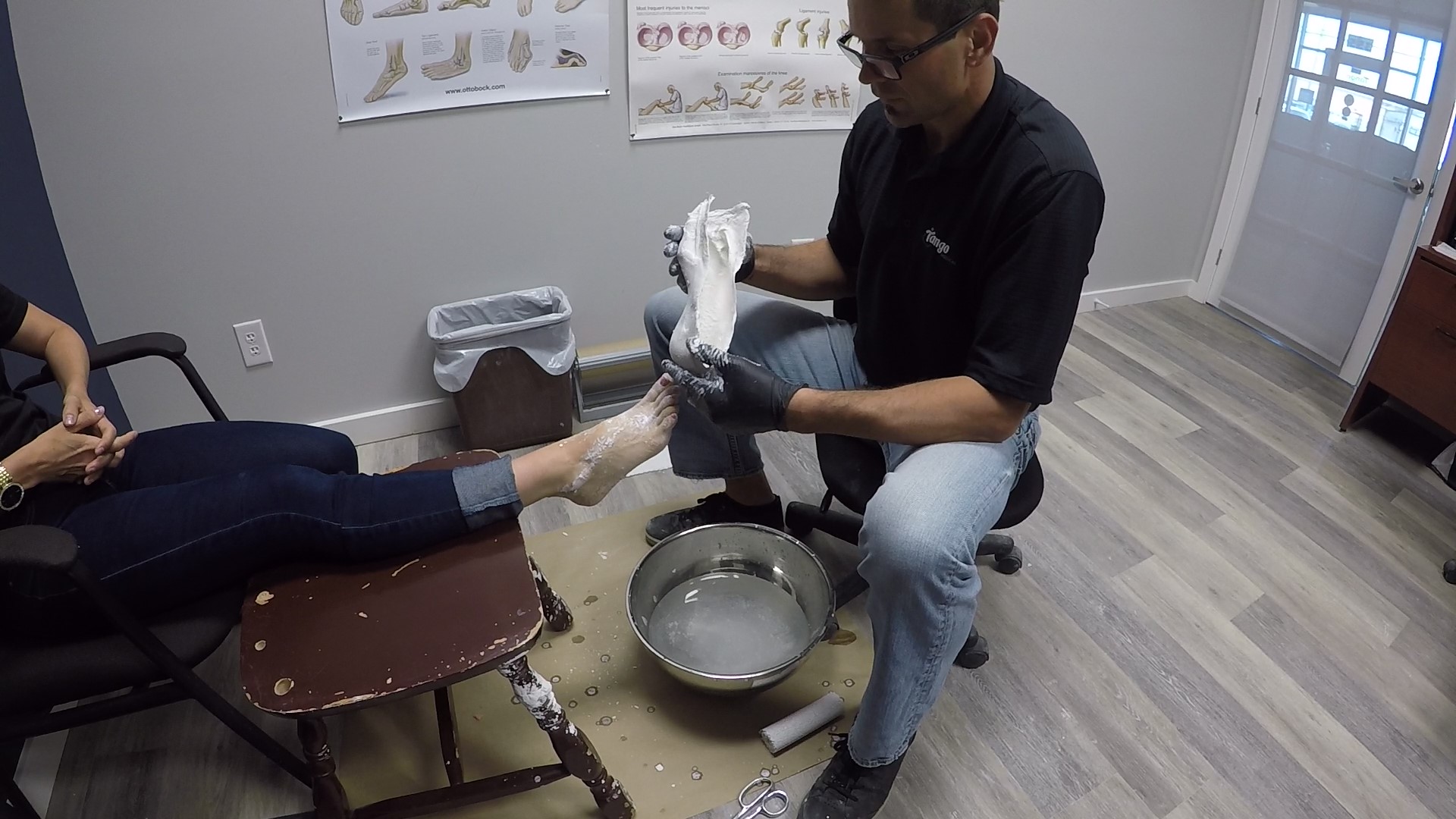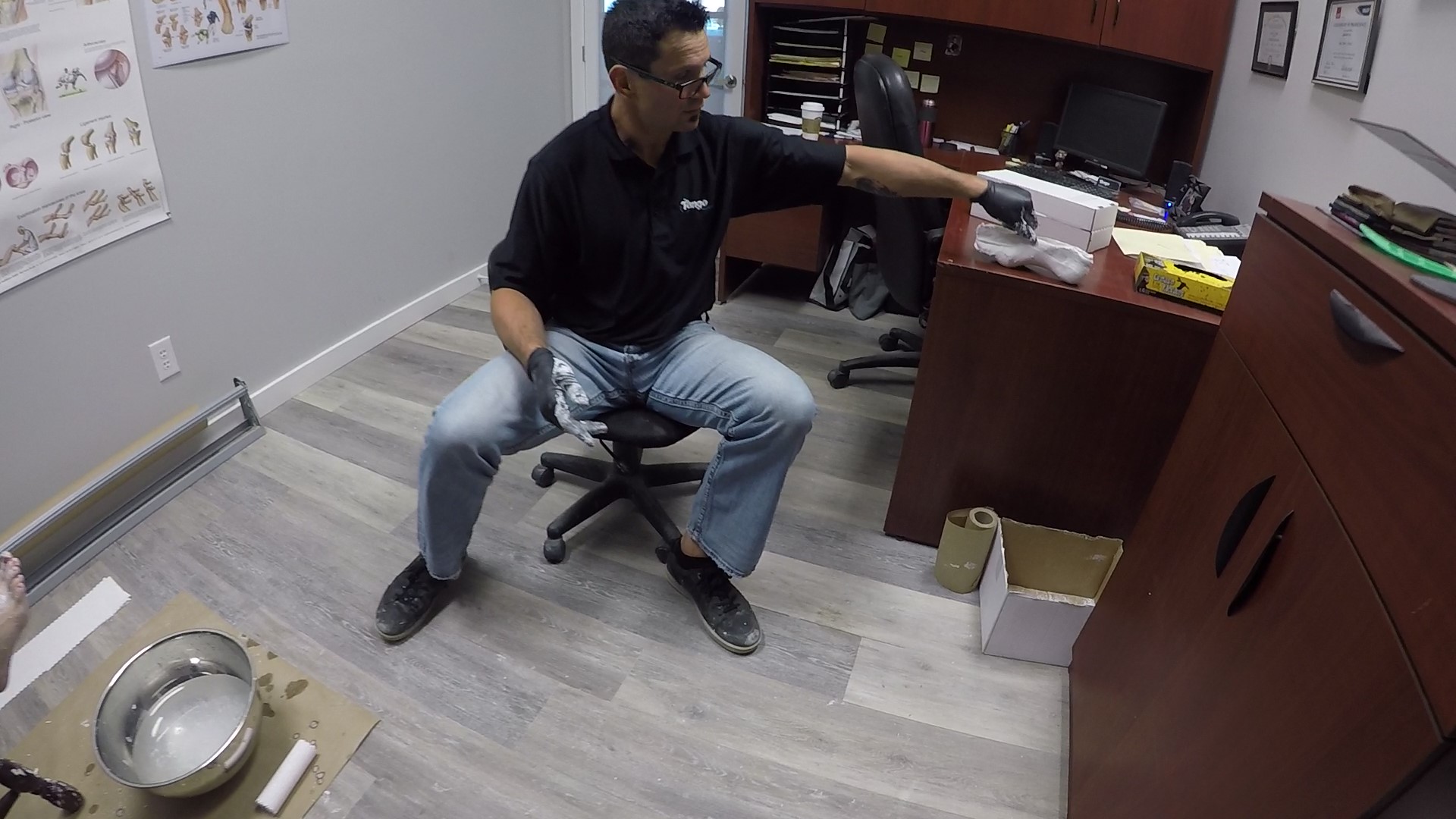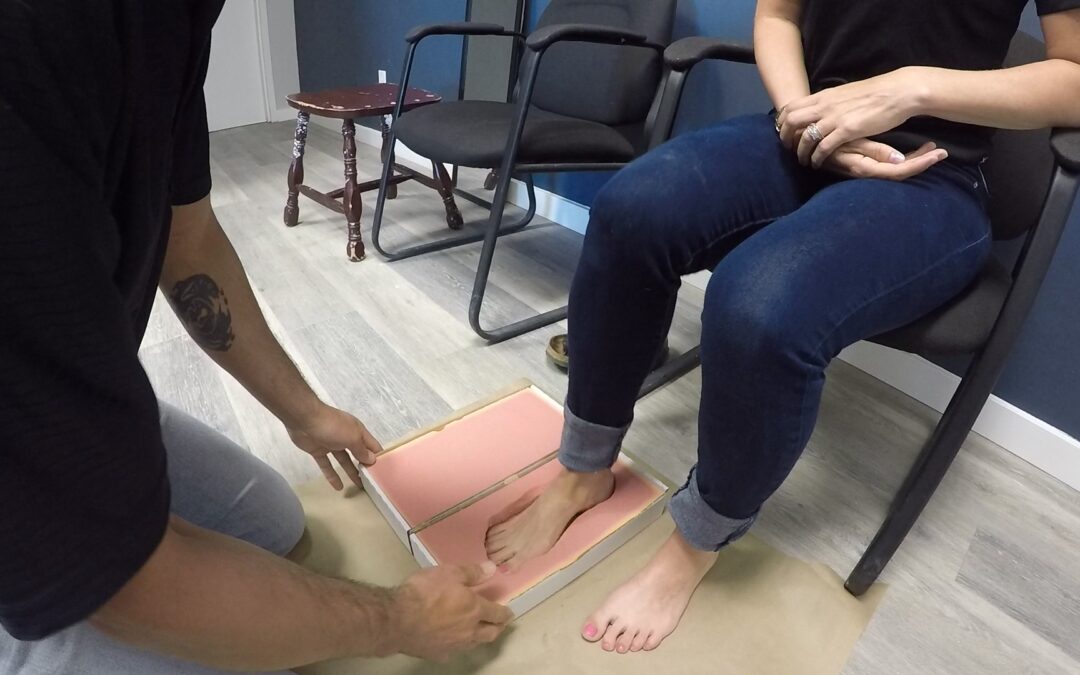Example of a semi-weight bearing fitting method.
These days there are many ways that custom made orthotics are being fitted, but if you assume each is equally valid in every situation, that is not correct. Typically I prefer to use a non-weight bearing method when taking an impression of the foot to be used. Although standing methods or gait observation methods allow you to easily observe the clients improper position, they require you to estimate where the foot should ideally be positioned. Because you are fighting body weight/mass it is difficult to put the foot into the proper position, and may require the gradual adding of supportive material and subsequent client feedback to try and obtain what feels like the correct position. Although many pedorthists are very good at assessing what the ideal foot position should be in this way, this method is more subjective and leaves more opportunity for error.
By using a non-weight bearing method we are able to put the foot into a position the foot naturally assumes when not under the stress of standing. I create a plaster cast of the foot’s shape when in this position, and from this cast create a custom made orthotic that is able to support this position when the client is standing.


 Example of a non-weight bearing capture method
Example of a non-weight bearing capture method
Other methods may be able to eventually achieve this, however I have found there is a lot more guess work along the way and it depends on good communication between the therapist and client, and an experienced pedorthist to get it right. With a non-weight bearing method such as the one I use, I find there is less opportunity for things to go wrong, and because of that I have high client satisfaction rates, and fewer clients coming back for modifications. There are times, however, where a full weight bearing/standing impression must be taken to accommodate the foot presentation and specific client conditions.
– Alan Busse, Canadian Certified Pedorthist


Recent Comments